New Works of the Week Honoring 100 Years of Drawings and Prints at The Met
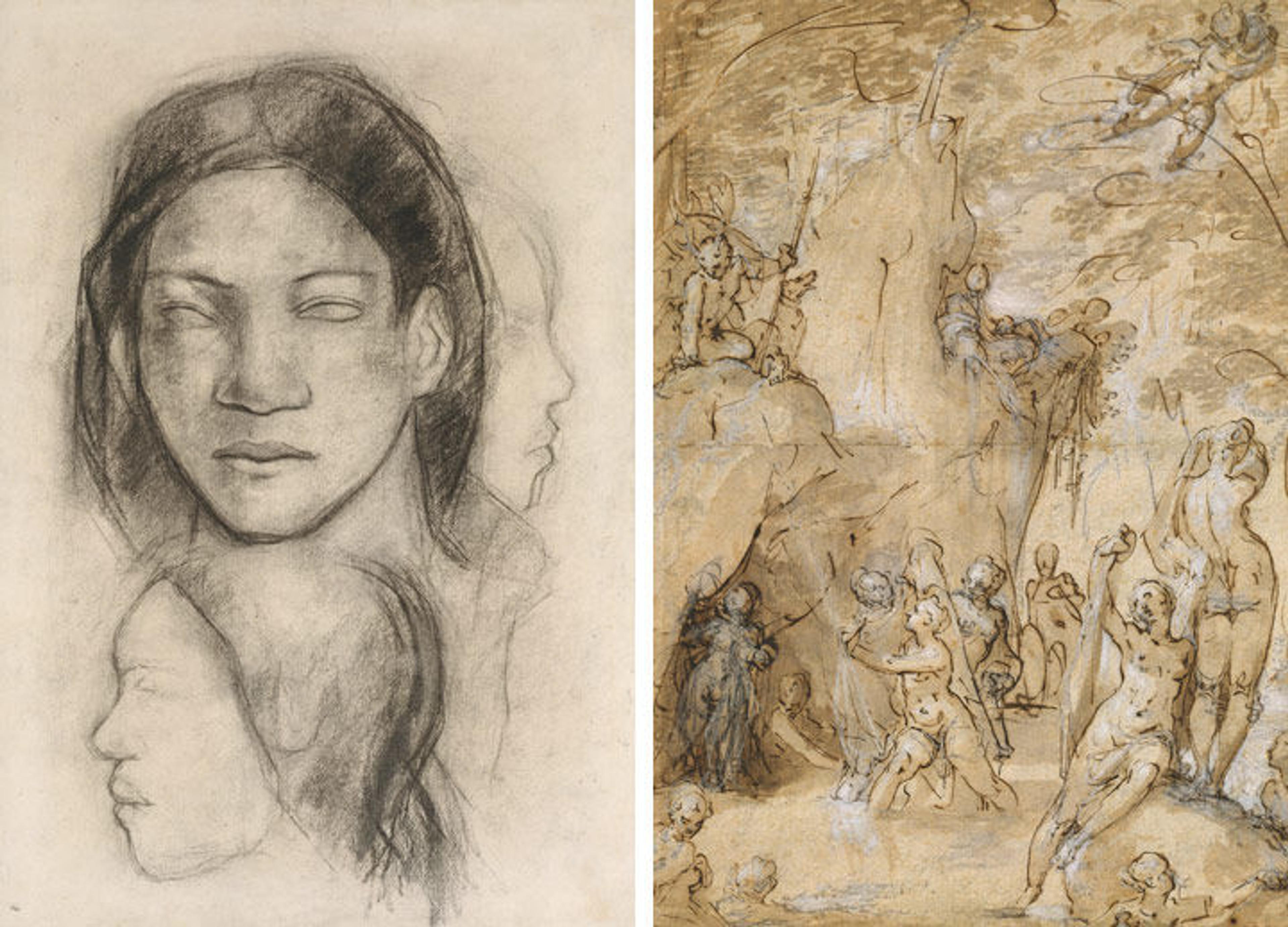
Left: Paul Gauguin (French, 1848–1903). Tahitian Faces (Frontal View and Profiles), ca. 1899. Charcoal on laid paper, Sheet: 16 1/8 x 12 1/4 in. (41 x 31.1 cm). The Metropolitan Museum of Art, New York, Purchase, The Annenberg Foundation Gift, 1996 (1996.418). Right: Bartholomeus Spranger (Netherlandish, 1546–1611). Diana and Actaeon (detail), ca. 1580–85. Pen and brown ink, brush and brown and gray wash, white heightening, over traces of black chalk, on paper washed blue and pink, 16 1/4 x 12 5/8 in. (41.3 x 32.1 cm). The Metropolitan Museum of Art, New York, Purchase, Lila Acheson Wallace Gift, 1997 (1997.93)
«To celebrate the centenary of a curatorial department dedicated to works on paper, The Robert Wood Johnson, Jr. Gallery will feature one highlight per week from the collection of the Department of Drawings and Prints through April 30, 2017. Reflecting the remarkable breadth of the department's holdings, the rotating selection includes drawings and prints, as well as woodblocks, books, cut paper, and ephemera, ranging from the early 15th to the 21st century.»
From January 3 through January 9, you'll have the chance to view Paul Gauguin's Tahitian Faces (Frontal View and Profiles) (ca. 1899), a drawing that demonstrates the artist's almost worshipful appreciation of the Maohi people. Gauguin, who believed that the Maohi were untouched by modern civilization's damaging influence, rendered the faces of Maohi women that he painted on his second voyage to Tahiti with a mask-like quality devoid of any signs of emotion, lending the figures a timeless and remote character.
Bartolomeus Spranger's depiction of the story of Diana and Acteon by the Roman poet Ovid will be on view from January 10 through January 16. In the drawing, dated around 1580–85, the young prince Acteon, perched atop a rocky outcropping, looks down upon the goddess Diana bathing in the company of nymphs. The imposing drawing was likely made soon after Spranger arrived at the court of Rudolf II in Prague and exemplifies the emperor's taste for erotic mythological subject matter.
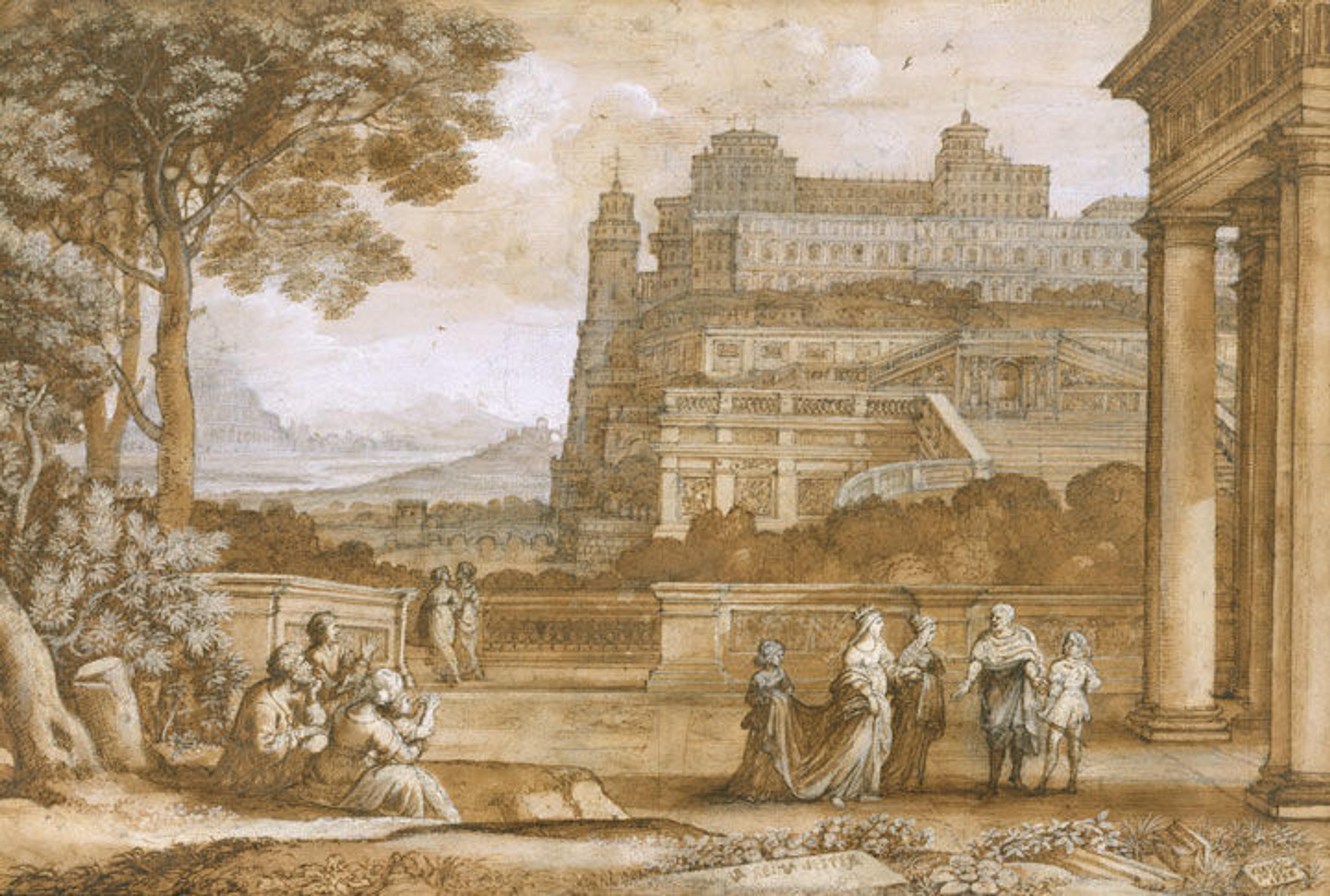
Claude Lorrain (Claude Gellée) (French, 1604/5?–1682). Queen Esther Approaching the Palace of Ahasuerus, 1658. Pen and brown ink; brown wash over black chalk; heightened with white, 11 13/16 x 17 1/2 in. (30 x 44.4 cm). The Metropolitan Museum of Art, New York, Purchase, The Annenberg Foundation Gift, 1997 (1997.156)
Claude Lorrain's magnificent compositional study Queen Esther Approaching the Palace of Ahasuerus (1658) stands out in the artist's graphic oeuvre for its high degree of finish and detail. It depicts the Old Testament story of Queen Esther arriving at the king's palace to implore mercy for her condemned people. Presumably made as a presentation drawing for François Bosquet, bishop of Montpellier, for a resulting painting that was later largely destroyed by fire, the study is set outdoors in an invented landscape animated by a diffuse naturalistic light. This work will be on view from January 17 through January 23.
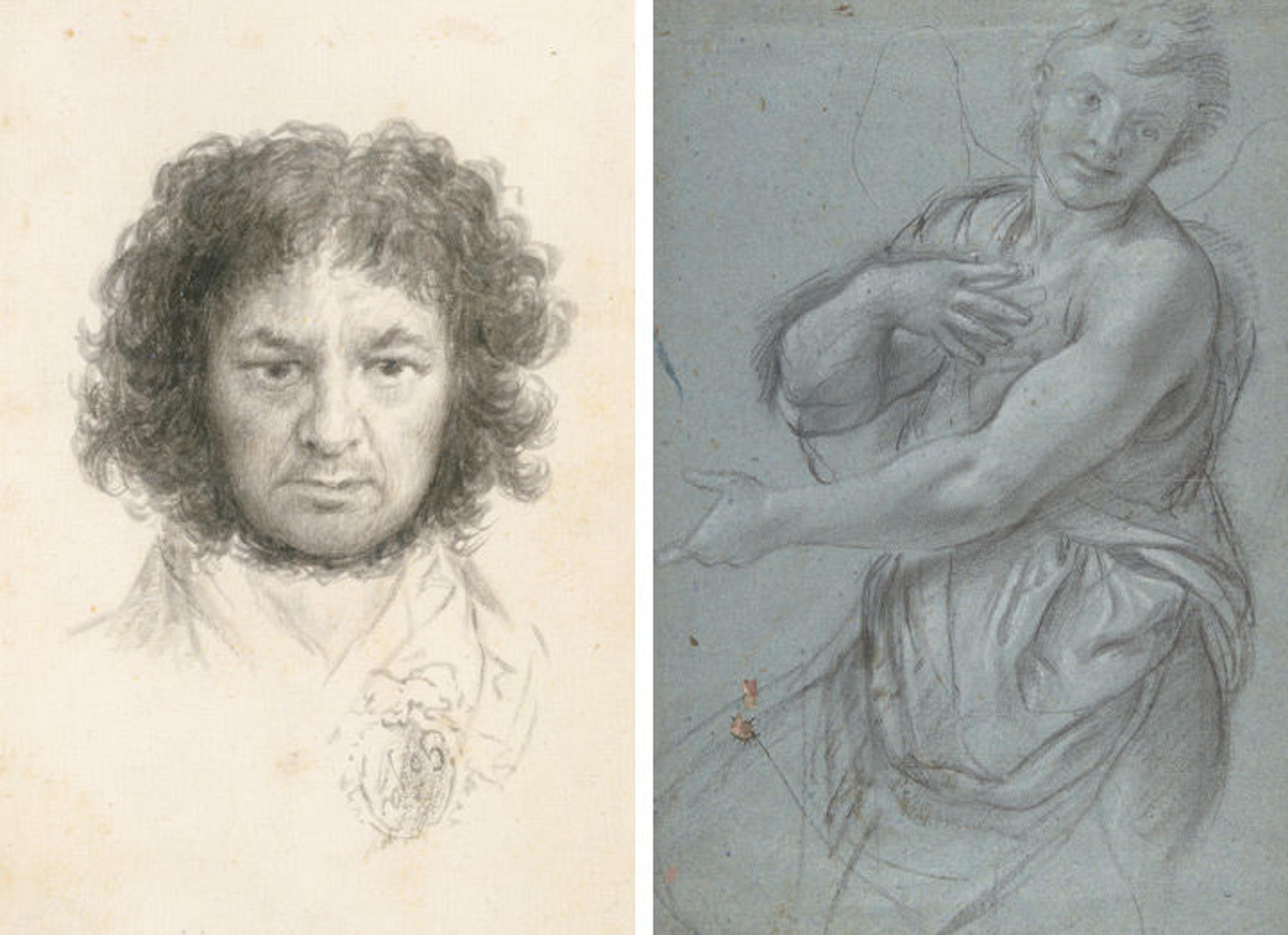
Left: Goya (Francisco de Goya y Lucientes) (Spanish, 1746–1828). Self-Portrait, ca. 1795–97. Brush and gray wash on laid paper, 6 x 3 9/16 in. (15.3 x 9.1 cm). The Metropolitan Museum of Art, New York, Harris Brisbane Dick Fund, 1935 (35.103.1). Right: Annibale Carracci (Italian, 1560–1609). Study for an Angel, 1600–2. Charcoal or soft black chalk, highlighted with white chalk, on blue paper; several scattered stains of rose-colored paint at lower left, Sheet: 14 1/2 x 9 3/4 in. (36.9 x 24.8 cm). The Metropolitan Museum of Art, New York, Pfeiffer Fund, 1962 (62.120.1)
For one week beginning January 24, Goya's powerful self-portrait of around 1795–97 will be on view. In the drawing Goya looks directly at the viewer with mesmerizing intensity. Between October 1792 and February 1793 the artist suffered a serious illness that left him profoundly deaf for the rest of his life. Deprived of his hearing, the interior world that Goya inhabited is well expressed in this portrait, where the intensity of his thoughts seem manifest in his gaze.
From January 31 through February 6, Annibale Carracci's Study for an Angel (1600–2), likely studied from a young model posed in the artist's studio, will be installed in the gallery. Charcoal and white highlight are used to great effect to convey the figure's lively character and animated gesture; the wings are only lightly indicated above his shoulders, almost as an afterthought. The angel appears in Annibale's altarpiece depicting Saint Gregory praying for souls in Purgatory, which he painted for a chapel in the church of San Gregorio Magno in Rome.
Left: Karl Friedrich Schinkel (German, 1781–1841). Gothic Church Hidden by a Tree, 1810. Lithograph with white heightening printed on brown paper, Sheet: 19 5/16 x 13 5/8 in. (49 x 34.6 cm). The Metropolitan Museum of Art, New York, The Elisha Whittelsey Collection, The Elisha Whittelsey Fund, 2004 (2004.21)
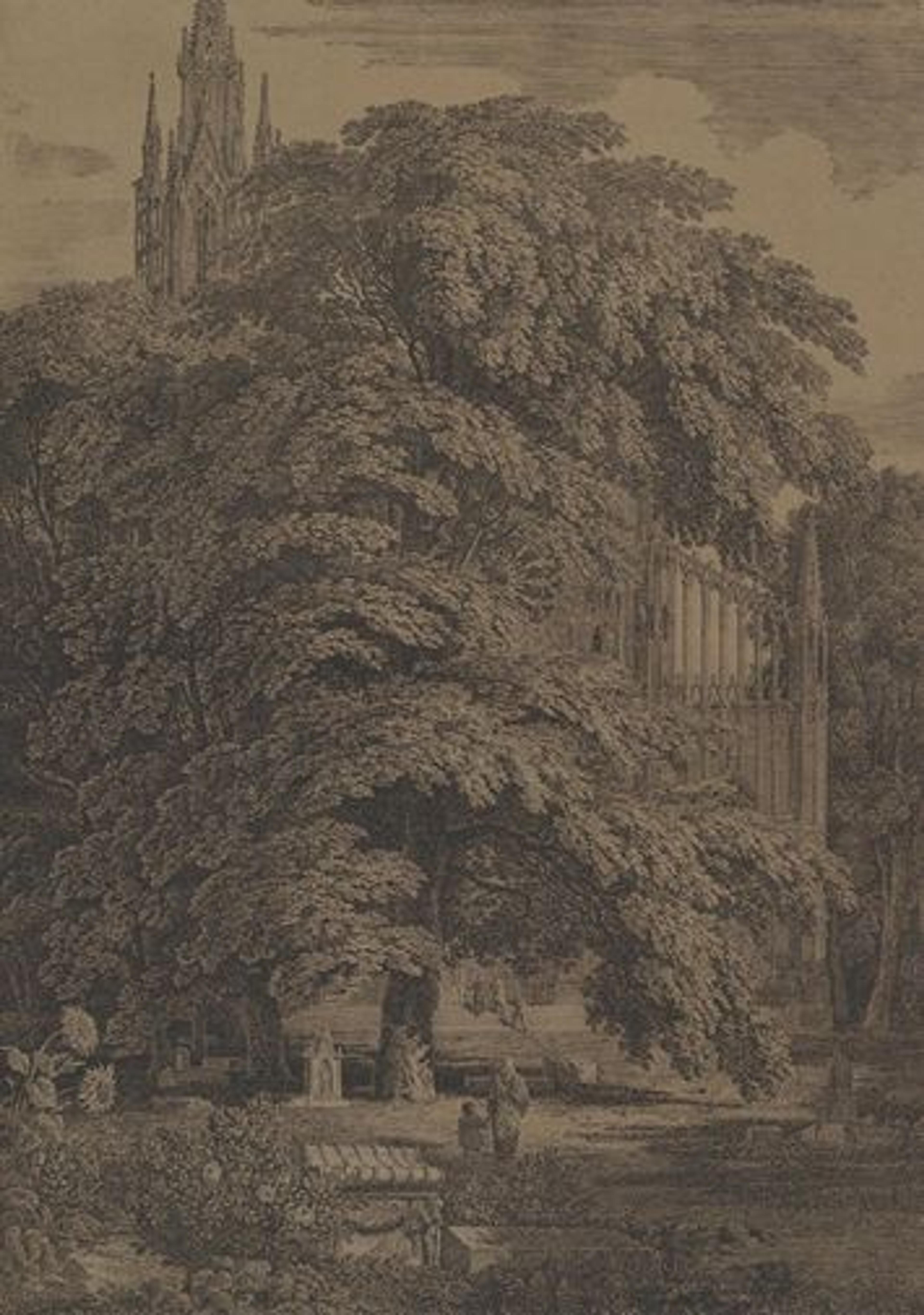
Known primarily as an architect in his role as head of state building for the Prussian government, Karl Friedrich Schinkel also worked as a painter, draftsman, and, on a few occasions, printmaker. Gothic Church Hidden by a Tree (1810) is one of a half a dozen lithographs Schinkel made at a newly established lithography press in Berlin. The extraordinary print, which employs parallel hatching in a range of densities, was exhibited at the Berlin Academy in the autumn of 1810 to great acclaim. The print will be on view from February 7 through February 13.
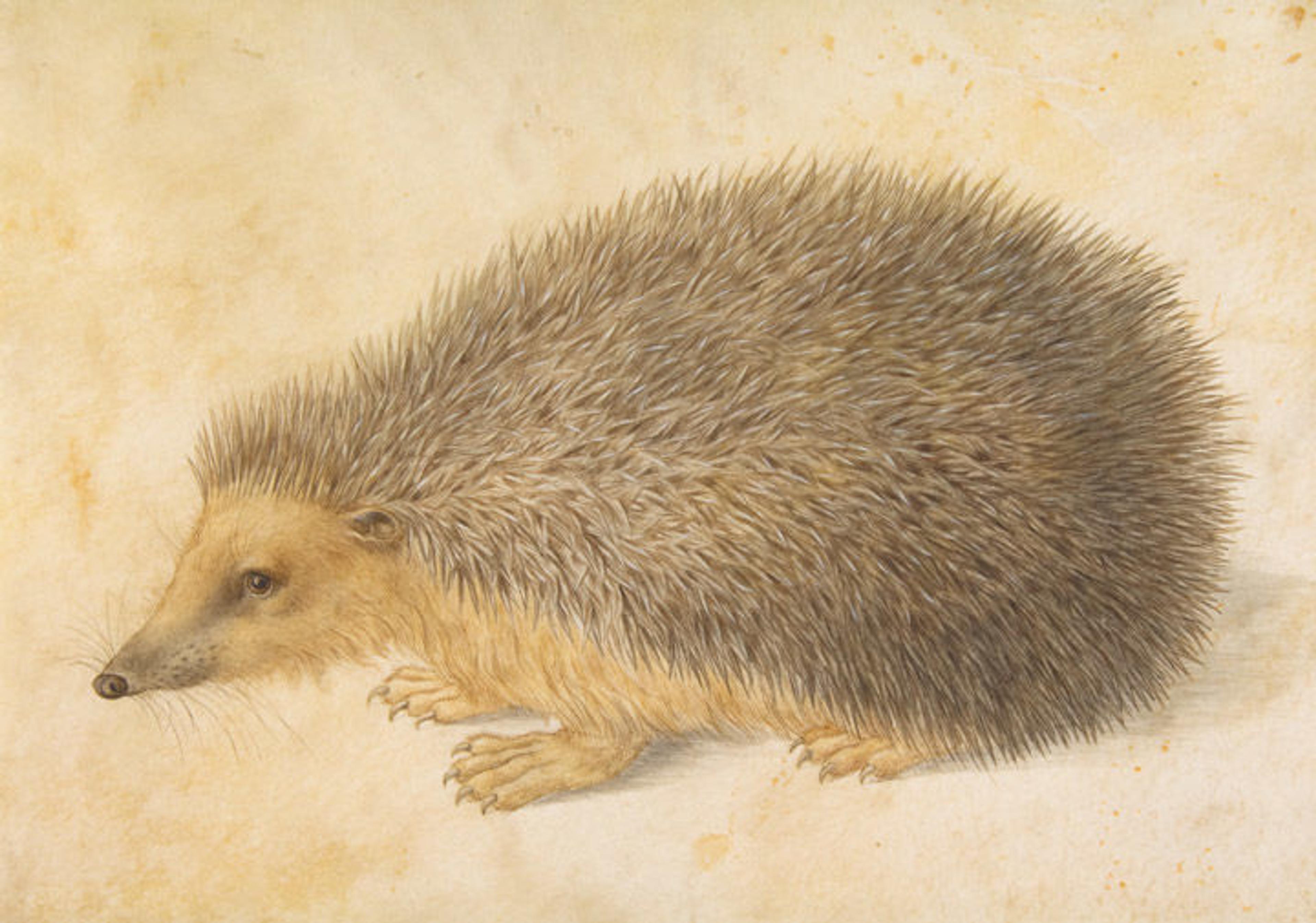
Hans Hoffmann (German, ca. 1545/1550–1591/1592). A Hedgehog (Erinaceus roumanicus), before 1584. Watercolor and gouache on vellum, Sheet: 8 1/8 x 12 1/16 in. (20.7 x 30.7 cm). The Metropolitan Museum of Art, New York, Purchase, Annette de la Renta Gift, 2005 (2005.347)
Some 40 years after his death in 1528, a renewed interest in Albrecht Dürer's art originated in Nuremberg, where the artist worked for most of his life. Hans Hoffmann, a leader of the "Dürer Renaissance," began his career in Nuremberg and was later appointed court painter to Rudolf II in Prague. Hoffmann is best known today for his remarkably lifelike depictions of plants and animals, including this animated and alert rendering of a hedgehog likely studied from life. You'll have the opportunity to view Hoffman's drawing from February 14 through February 20.
Right: Master of the Playing Cards (German, active ca. 1425–50). The Queen of Flowers, ca. 1435–40. Engraving printed from two plates, Sheet: 5 1/8 x 3 9/16 in. (13 x 9.1 cm). The Metropolitan Museum of Art, New York, Janet Lee Kadesky Ruttenberg Fund, in honor of Colta Ives, and Harris Brisbane Dick Fund, 2006 (2006.429)
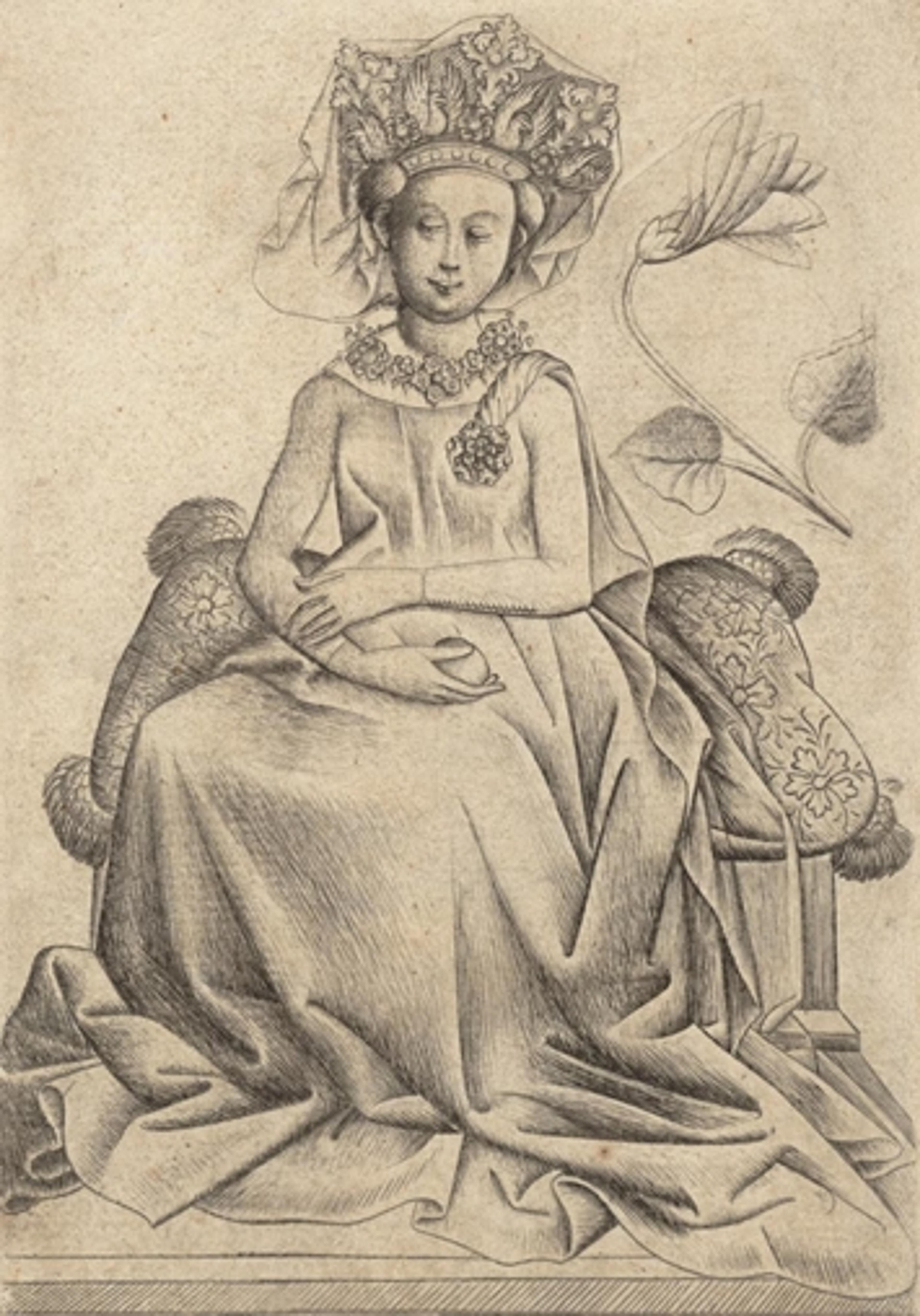
The Queen of Flowers (ca. 1435–40), an exceptionally delicate print by the first great figure in the history of engraving in northern Europe—the anonymous artist commonly referred to as the Master of the Playing Cards—will be on view for one week beginning February 21. The Master, who likely worked in Alsace, created a group of approximately 70 playing cards that, like present-day playing cards, consisted of number and figure cards of different suits. The set in which this card was included is largely composed of flowers, birds, deer, wild men, and beasts of prey.
Check back soon on Now at The Met to find out which highlights from the collection we will present in our final group of works of the week!
Related Links
Drawings and Prints: Selections from The Met Collection, on view at The Met Fifth Avenue through January 30, 2017
In Season: "Before Fortune-Telling: The History and Structure of Tarot Cards" (April 8, 2016)
Allison Rudnick
Associate Curator Allison Rudnick manages the Study Room for Drawings and Prints and oversees the ephemera collection. She joined the department as a research assistant in 2012 and has held positions at the print shop Harlan & Weaver and the Whitney Museum of American Art. Active in the field of contemporary printmaking, she is a frequent contributor to Art in Print and serves as treasurer for the Association of Print Scholars. She holds a BA from Connecticut College and an MPhil from the Graduate Center of the City University of New York, where she is a PhD candidate.